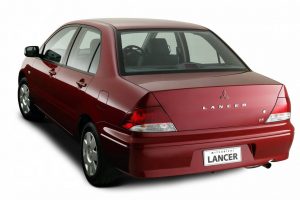Recalls: Mitsubishi CG Lancer
Overview
Manufacturers, or importers, issue recalls for defects or faults which have the potential to cause injury. Generally, manufacturers will inform the original buyers if their vehicle is subject to a recall and of the steps required to remedy the defect or fault. Please note that the recalls below (if any) are for Australian-delivered vehicles only. Furthermore, the number of recalls should not be taken as an indication of a model’s reliability or its safety more generally.
Recalls: Mitsubishi CG Lancer
- In April 2007, a recall was issued for Mitsubishi CG Lancer wagons manufactured from July 1993 to December 2002. For these vehicles, the bolts attaching the tailgate gas strut mounting bracket to the body may become loose (PRA 2007/9215).
Problems and faults: Mitsubishi CG Lancer
Overview
This section identifies potential problems, causes and fixes based on the experiences of owners and repairers, online sources and technical service bulletins. This information is provided solely for reference purposes and AustralianCar.Reviews recommends that only properly qualified persons carry out repairs or modifications. Furthermore, the number of items below should not be taken as an indicator of a model’s reliability or the frequency with which they may occur.
To report a problem or fault to the AustralianCar.Reviews team, please use the Contact Us form. Note that AustralianCar.Reviews does not offer advice on automotive problems or disputes; such enquiries will not receive a reply. For vehicles purchased from dealers after 1 January 2011, please see our Australian Consumer Law fact sheet.
Problems and faults: Mitsubishi CG Lancer
- For Mitsubishi CG Lancer models with automatic transmissions, transmission shuddering, engine surging and driveline vibrations when cruising may be caused by worn out transmission fluid allowing the torque converter clutch to dither. If so, the transmission needs to be flushed and re-filled with newer SP-III fluid.
- Water may enter the car via the rocker panels (side seals) or the area around the upper dash; if so, resealing is required.
- Water may leak onto the front floor due to debris (leaves, etc.) clogging the drain tube in the air conditioning motor housing, requiring the fitment of a filter to keep such material out.
- Water leaks may occur around the wiper arm pivots, damaging the air conditioning motor and requiring special caps to be installed over the wiper arm pivots.




